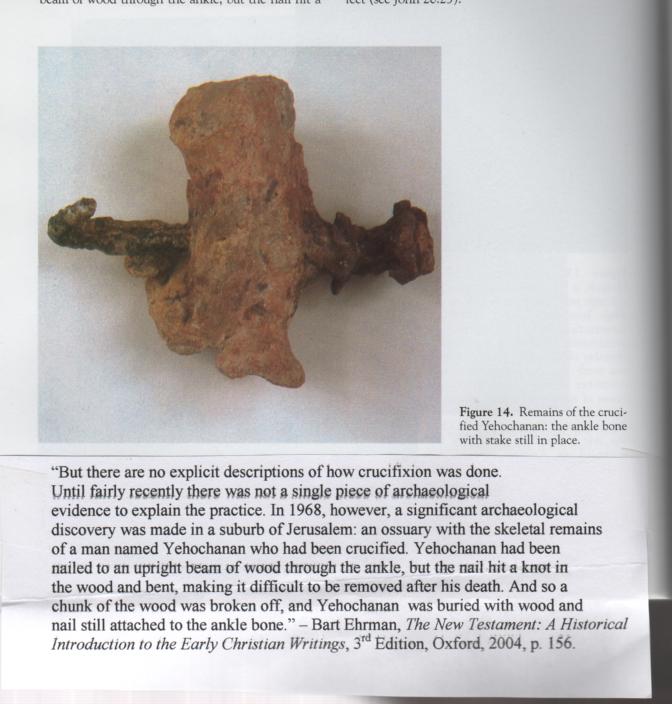“But there are no explicit descriptions of how crucifixion was done. Until fairly recently there was not a single piece of archaeological evidence to explain the practice. In 1968, however, a significant archaeological discovery was made in a suburb of Jerusalem: an ossuary with the skeletal remains of a man named Yehochanan who had been crucified. Yehochanan had been nailed to an upright beam of wood through the ankle, but the nail hit a knot in the wood and bent, making it difficult to be removed after his death. And so a chunk of the wood was broken off, and Yehochanan was buried with wood and nail still attached to the ankle bone.” – Bart Ehrman, The New Testament: A Historical Introduction to the Early Christian Writings, 3rd Edition, Oxford, 2004, p. 156.

CRUCIFIXION — Nail In Ankle Bone
Posted on December 14, 2011 · 4 Comments

 Author, speaker, editor of Searching Together, itinerant encourager of relational communities.
Author, speaker, editor of Searching Together, itinerant encourager of relational communities.
Jon,
It is interesting to consider what all had to happen that we should be looking upon this photo right now.
1) There was a knot in the wood right where the nail was hammered in and the nail bent against the knot, which then caused the nail to be tightly lodged into the wood.
2) Also it would appear that whomever hammered the nail through the flesh hit through the bone instead of between the bones.
3) The remains of those who were crucified were usually disposed of (perhaps burnt), yet this person was buried (with respect) in a stone tomb which could be described as a “stone casket” today.
4) Then, of course, this “stone casket” was discovered in the year 1968 after being hidden and preserved until that time.
What an awesome piece of archaeological evidence!
What an awesome piece of archaeological evidence! Is right.
WHAT TYPE OF WOOD WAS ATTACHED TO THE NAIL?
I have no idea.